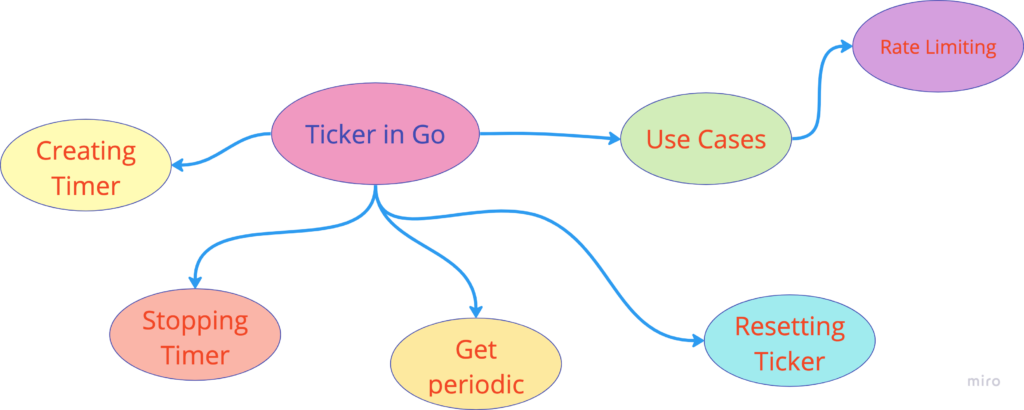Introduction
Welcome to the dynamic world of Go programming, where the concept of time takes center stage with the Ticker. In Go, a Ticker is a powerful and versatile mechanism that allows developers to execute tasks at regular intervals, akin to a rhythmic beat pulsating through their applications. This timekeeping marvel not only ensures precision in executing repetitive tasks but also adds a layer of sophistication to the realm of concurrent programming.
As we embark on this exploration of Tickers in Go, we’ll unravel their inner workings, discover how they synchronize with the language’s concurrency features and witness firsthand the elegance they bring to periodic tasks. Whether you’re a seasoned Go developer or just stepping into the language, understanding Tickers opens up avenues for creating efficient, scheduled workflows that harmonize seamlessly with Go’s concurrent nature. Join us as we dive into the rhythmic heartbeat of Go’s timekeeping prowess with Tickers.
Ticker in Go provides developers with a powerful toolset for executing recurring tasks and managing time-based operations. This guide explores tickers in-depth, from their creation to practical implementations like rate limiting. Please practice it to get full advantage of this post.
What is a Ticker?
Tickers in Go are akin to timers but offer the functionality to repeatedly send signals on a channel at specified intervals. They serve as reliable tools for executing tasks periodically.

Creating Ticker in Go
The time.NewTicker() function initializes the ticker, setting the interval duration for signaling.
Stopping Ticker
The ticker (created using time.NewTicker()) is stopped using the Stop() function.
ticker := time.NewTicker()
ticker.Stop()Get periodic ticks of a ticker in Go
We can get periodic ticks of a ticker by ranging over C (channel of ticker).
See the below illustration of creation, ranging, and stopping a ticker.
package main
import (
"fmt"
"time"
)
func main() {
ticker := time.NewTicker(1 * time.Second)
defer ticker.Stop() // Ensure the ticker is stopped when the function exits
go func() {
time.Sleep(3 * time.Second) // Simulating work for 3 seconds
ticker.Stop() // Stop the ticker after 3 seconds
}()
for t := range ticker.C {
fmt.Println("Tick at", t)
}
}
Resetting a ticker in Go
A ticker can be reset using the Reset() function
package main
import (
"fmt"
"time"
)
func main() {
ticker := time.NewTicker(1 * time.Second)
go func() {
time.Sleep(3 * time.Second) // Simulating work for 3 seconds
ticker.Reset(500 * time.Millisecond) // Resetting the ticker to a new interval of 500ms
}()
for t := range ticker.C {
fmt.Println("Tick at", t)
}
}
This code snippet demonstrates how to reset a ticker’s interval to 500 milliseconds after three seconds using ticker.Reset().
Exploring Real-world Use Cases
Rate Limiting with Tickers
Implementing rate limiting using tickers is a common scenario. This example showcases how tickers can control the rate of execution for specific tasks or requests.
package main
import (
"fmt"
"time"
)
func main() {
// Define a ticker with a 500ms interval
ticker := time.NewTicker(500 * time.Millisecond)
limit := 5 // Maximum allowed operations
counter := 0 // Counter to track executed operations
for range ticker.C {
if counter >= limit {
fmt.Println("Rate limit exceeded")
break
}
fmt.Println("Executing operation...")
// Perform your task here...
counter++
}
}
Best Practices and Considerations for Ticker in go
Precision and Caveats
Understand the precision limitations of tickers, which may vary due to system load or other factors. Consider these factors when dealing with short intervals.
Ticker Management
Properly manage tickers by ensuring they are stopped when no longer needed to prevent resource leaks and unexpected behaviors.
Conclusion
Tickers are indispensable for handling recurring tasks and managing time-sensitive operations in Go. Their flexibility empowers developers to implement rate limiting, perform periodic tasks, and orchestrate time-based activities with precision and efficiency.
Mastering the art of tickers equips developers with the skills to build responsive and efficient Go applications that effectively manage time-based functionalities.
Related Posts:
2 thoughts on “Best Way to Master Ticker in Go: A Comprehensive Guide in 4 Steps”